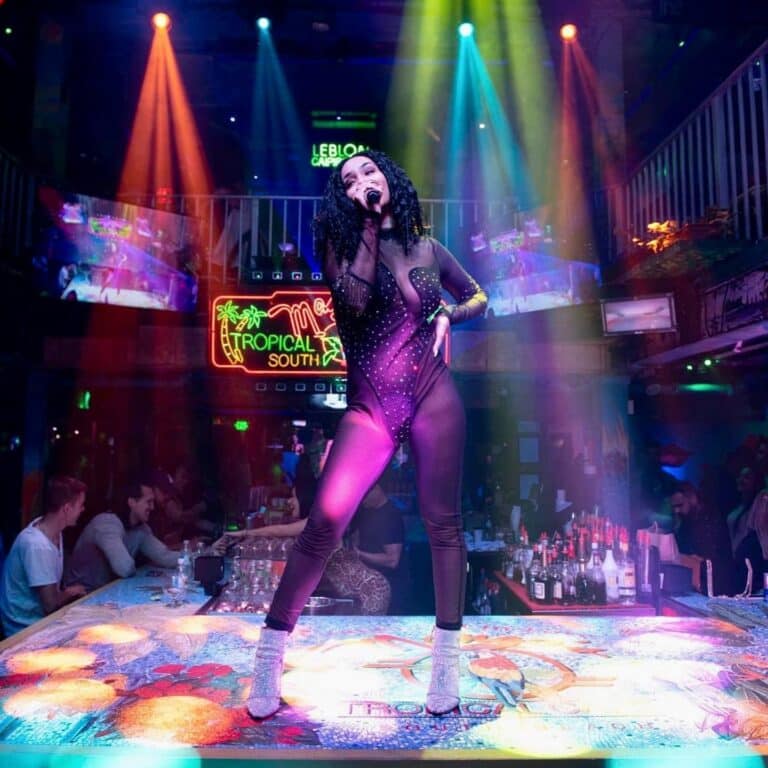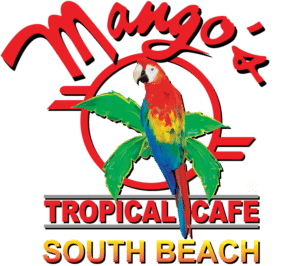Salsa music is lively and fun, and it’s hard to feel down when you’re dancing. Salsa music has a rich history that celebrates Latin American and Caribbean cultures. In Miami, salsa music is still prevalent, and you’ll find it playing at most nightclubs every night of the week. Let’s look at the history of salsa music and how you can experience it firsthand when you book an event or visit Mango’s Tropical Cafe in Miami Beach.
What Are the Origins of Salsa Music?
Salsa music has a rich history that’s rooted in many different types of Latin music. Son Cubano is a type of Latin music that originated in Cuba in the early 1900s and has heavily influenced what we know as salsa music today. As it grew in popularity, well-known bands and songwriters like Johnny Pacheco, Tito Puente, and Celia Cruz embraced and helped to spread salsa music throughout North and South America.
In the 1960s and 70s, salsa music became popular throughout the United States, taking New York City by storm. During this period, salsa music was trending from New York City all the way to the Caribbean.
Today, you can see salsa music’s influence in all types of music, including newly inspired genres like Latin American jazz and hip hop. Famous singers like Gloria Estefan and Marc Anthony have kept salsa music alive and well from the east coast to Miami Beach.
6 Characteristics of Salsa Music
There are several distinct characteristics that make salsa music unique. From the distinct rhythms and cultural influence to the language you’ll hear in its lyrics, salsa music is a very well-defined style of music. Let’s look at six of the most prominent characteristics of salsa music.
1. Afro-Cuban Rhythms
Salsa music is lively and fun and the perfect music for dancing. Rooted in Central and West Africa, Afro-Cuban and Afro-Caribbean rhythms are common components of salsa music. These rhythms are played with a variety of instruments, including bongos, conga drums, and timbales.
2. Bass Tumbaos
This basic rhythm is played on the bass, and it’s a fundamental part of salsa music. In music terms, it’s “clave neutral,” meaning it works with a 2:3 or 3:2 bell pattern.3.
3. Bell Patterns
Bell patterns are played with claves, which are wooden percussion instruments that look like small sticks. Percussionists play unique bell patterns in salsa music like the rumba clave and the son clave.
4. Latin American Influence
Salsa music is deeply rooted in Latin American culture and has been influenced by several Latin American styles of music. Some of these styles include rumba, the Brazilian samba, bossa nova, and bolero.
5. Ostinato Pattern
Ostinato patterns include guajeos, moñas, and montunos, and they’re typically found in most salsa pieces. A piano montuno is a very common ostinato pattern, while brass instruments play guajeo melodies called moñas.
6. Spanish Lyrics
Vocalists, or soneros, sing lyrics in the Spanish language in most salsa music. Salsa romantica is a genre that incorporates themes like romance, love, and heartbreak, while other genres of salsa music celebrate the region’s unique culture.
Enjoy Miami’s Best Salsa Scene at Mango’s Tropical Cafe
We’re always up for a good time at Mango’s Tropical Cafe. Every night, our schedule’s packed with scheduled events like live music, one-of-a-kind shows, and the best food in Miami Beach. If you’re looking for a vibrant scene where you can dance the night away, visit Mango’s Tropical Cafe. Book your next event with us to enjoy authentic salsa music and plenty of space to dance.
Salsa is a dance recognized the world over and known for its energy, festive music and costumes, and fun, sexy energy. While you may find salsa clubs in every state across the country, there is something magical about enjoying Salsa dancing in Miami. Where you find Salsa, you will often find Bachata, another sultry and electrifying dance you’ll find in many of Miami’s most popular, lively, and trendy dance clubs. Salsa dancing in Miami is a huge draw, with many Salsa legends gracing the floors of Miami Salsa dancing clubs over the years.
But where do dances like Salsa and Bachata come from, and what is the history of Salsa dancing? How can you learn to dance Salsa and Bachata yourself?
The History of Salsa and Bachata
Salsa is a Latin dance that has evolved over the decades into the lively, rhythmic, fiery dance it is today. Originating in Cuba, Salsa has borrowed from a variety of Latin and African dance styles, featuring energetic, fast-paced movements. But where did the name come from? Salsa dancing has its origins in other popular dances such as Mamba, Son Montuno, and Cha Cha Cha, for example. It evolved, borrowing from other Latin influences.
Salsa was a word frequently called out during dance music performances to kick things up a notch, in other words, make it spicier! This may be where the name came from.
Bachata dancing hails from the Dominican Republic and is a popular party dance. The word Bachata means party or gathering. Just as Salsa evolved and was influenced by a variety of Latin dancing and music styles, so Bachata evolved with the help of Cuban and Puerto Rican music and dance influences.
Both dances were further influenced as they became popularized in the United States. Over time, both dances found their home in clubs across the country, but Miami, in particular, known worldwide for its vibrant nightlife and late-night dancing.
The Benefits of Salsa Dancing
Salsa is a high-energy, fast-paced dance that may look intimidating to learn, but once you get the hang of the dance, it is fun. Salsa clubs are filled with classic and new Latin beats and offer a sultry and carefree vibe. But it’s not just fun; it’s also a great way to stay healthy. The movement of Salsa offers an excellent cardiovascular workout, encouraging circulation, burning calories, and working muscles and joints. Salsa keeps you supple, healthy, and youthful!
Experience Salsa and Bachata in person in Miami
Where is the best place to experience Salsa and Bachata dancing? Miami, of course! There is something magical about a balmy tropical night in Miami Beach. When you step into a Miami Salsa dancing club, you will be swept away by the rhythmic sounds and energy of the music and the dance. While you can easily spend a perfectly fun night watching from the bar or table, why not step onto the floor yourself? Salsa lessons are plentiful and a fun way to spend a night with friends or your date.
Mango’s Tropical Cafe in Miami – Sip, Savor & Salsa
Where can you go to learn and enjoy Bachata and Salsa dancing in Miami? You’ll find Mango’s Tropical Cafe is a great place to experience Miami’s lively Salsa scene. Mango’s is well-known for its Salsa and other dancing, live music, fantastic vibe, and amazing food, with a full menu of delicious appetizers and meals, tropical beverages, and electrifying performances from talented dancers and musicians.
Mango’s Tropical Cafe offers nightly shows, Salsa lessons, and dancing till 5 am. Sip, Savor, and Salsa is the perfect way to learn Salsa and have an amazing time, starting with a delicious meal. Enjoy appetizers, mouth-watering Mojito, and Salsa lessons with your group or solo.
Mango’s is also an ideal date night spot or location for celebrating birthdays and other occasions. Check our website for showtimes, lessons, menus, and more. We can’t wait for you to join us!
image credit: Billion Photos




